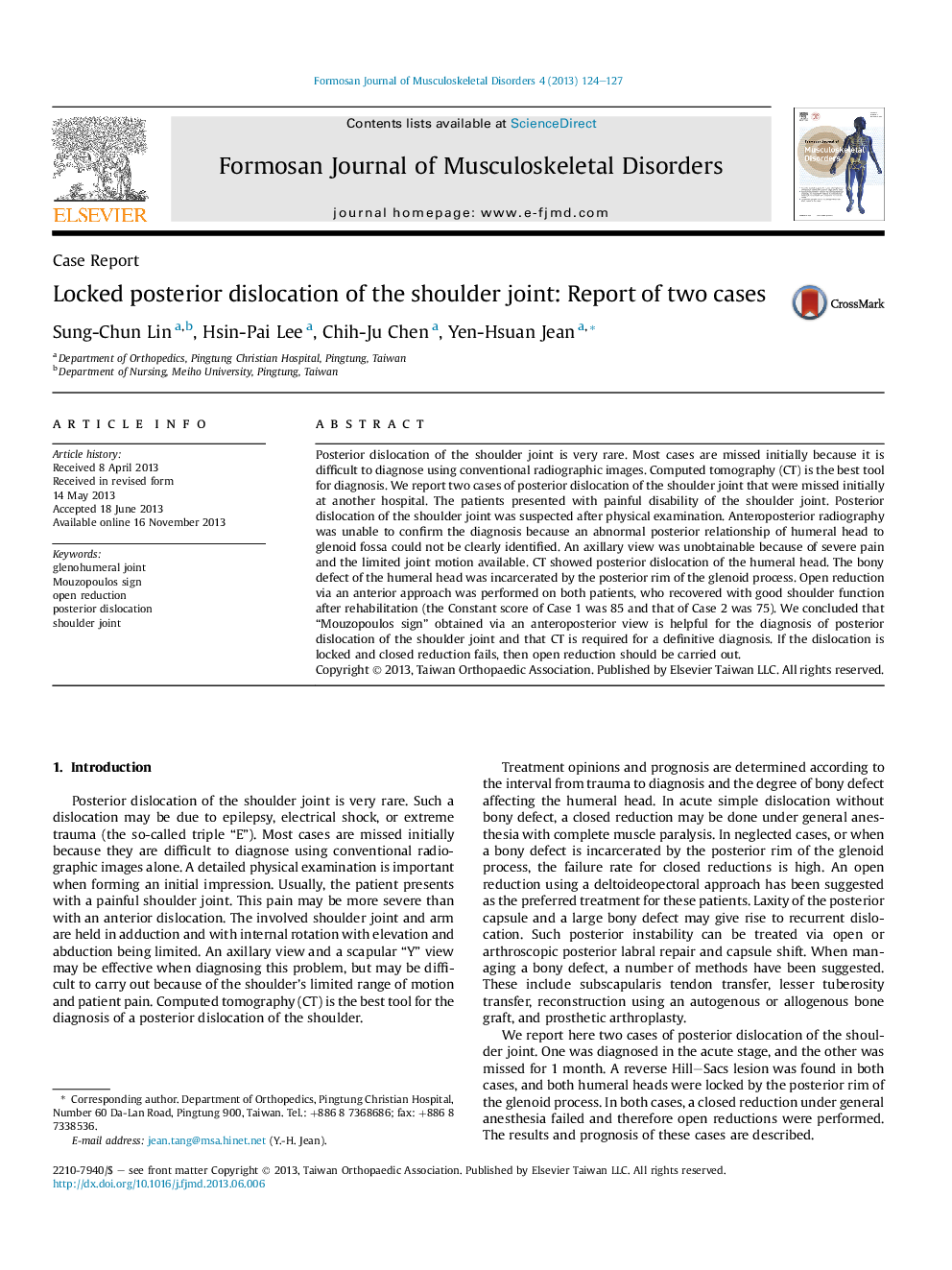| Article ID | Journal | Published Year | Pages | File Type |
|---|---|---|---|---|
| 4055326 | Formosan Journal of Musculoskeletal Disorders | 2013 | 4 Pages |
Abstract
Posterior dislocation of the shoulder joint is very rare. Most cases are missed initially because it is difficult to diagnose using conventional radiographic images. Computed tomography (CT) is the best tool for diagnosis. We report two cases of posterior dislocation of the shoulder joint that were missed initially at another hospital. The patients presented with painful disability of the shoulder joint. Posterior dislocation of the shoulder joint was suspected after physical examination. Anteroposterior radiography was unable to confirm the diagnosis because an abnormal posterior relationship of humeral head to glenoid fossa could not be clearly identified. An axillary view was unobtainable because of severe pain and the limited joint motion available. CT showed posterior dislocation of the humeral head. The bony defect of the humeral head was incarcerated by the posterior rim of the glenoid process. Open reduction via an anterior approach was performed on both patients, who recovered with good shoulder function after rehabilitation (the Constant score of Case 1 was 85 and that of Case 2 was 75). We concluded that “Mouzopoulos sign” obtained via an anteroposterior view is helpful for the diagnosis of posterior dislocation of the shoulder joint and that CT is required for a definitive diagnosis. If the dislocation is locked and closed reduction fails, then open reduction should be carried out.
Related Topics
Health Sciences
Medicine and Dentistry
Orthopedics, Sports Medicine and Rehabilitation
Authors
Sung-Chun Lin, Hsin-Pai Lee, Chih-Ju Chen, Yen-Hsuan Jean,
